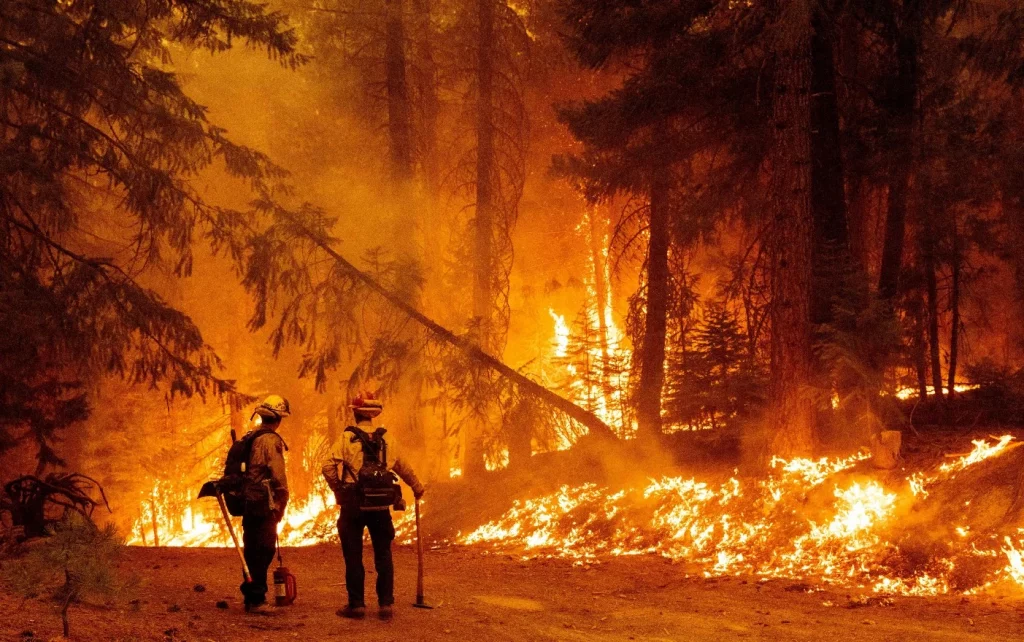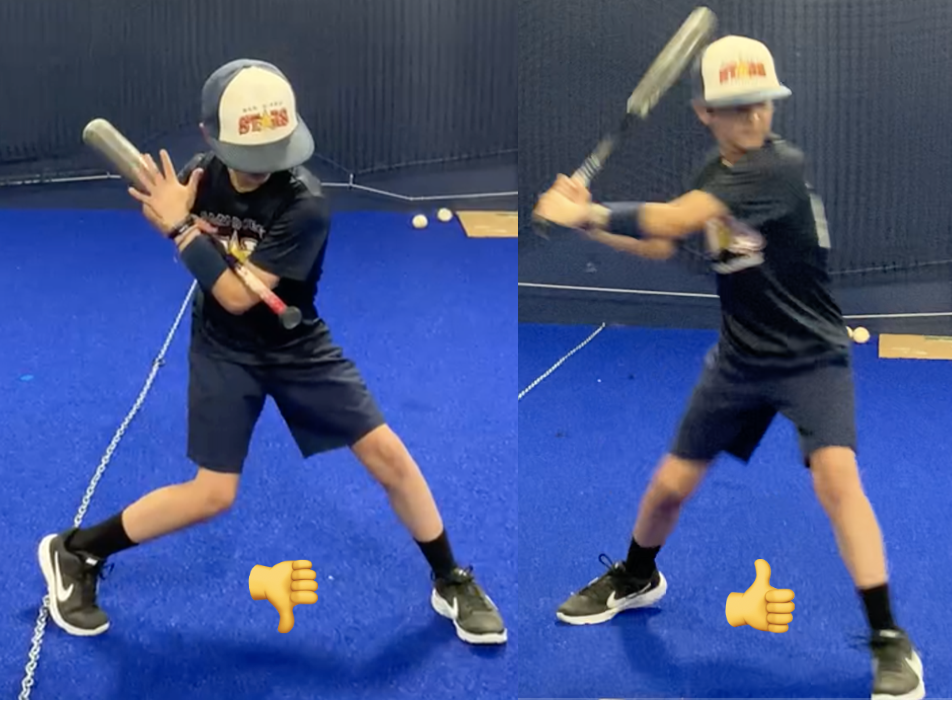
On July 2, 1994 a lightning strike sparked a fire near the base of Storm King Mountain, about seven miles west of Glenwood Springs, CO. After 48 hours, the fire had only spread a mere three acres. While it didn’t start as an immediate threat to people, the persistent blaze caused local community members to grow concerned. On July 5, a plan commenced to extinguish the blaze before it could grow out of control.
The uneven and rugged terrain created a difficult constraint for firefighters that were dispatched to the scene. As a result, smokejumpers were sent by air to help contain the fire. Fire lines were dug out to create tangible barriers designed to slow the fire’s progress. What happened next, however, was something they failed to account for.
On the afternoon of July 6, a series of strong uphill winds pushed the fire up the canyon. As flames spread across the gulch, firefighters on the ground were put at serious risk. They only had moments to flee 200 feet uphill a rugged terrain to safety. Fourteen – four women, ten men – never made it.
There have only been six wildfires in United States history that have claimed the lives of more than 13 firefighters. The Wildland Fire, as remembered now, is one of them.
When investigators examined the scene, they discovered a trend. Over a fire year period between 1990 and 1995, 23 firefighters lost their lives batting in wild fires. Each death shared a similar story: Instead of ditching their heavy equipment while running uphill from the fire, they held on to it. This puzzled investigators. Common sense tells you to drop the equipment, lose the deadweight, and run for your life. What actually happened, however, was the exact opposite. Firefighters were willingly carrying around additional weight that prevented them from saving their own lives. For a group of people that specialized in saving lives, it made no sense at all.
That is, until you evaluate the decision beyond surface level.
When one of the Wildland fire survivors testified about their near experience with death, they were every bit as confused. He said, “About three hundred yards up the hill, I then realized I still had my saw over my shoulder!”
What he said next was even more puzzling: “I irrationally started looking for a place to put (my chainsaw) down where it wouldn’t get burned… I remember thinking, ‘I can’t believe I’m putting down my saw.’”
Not everyone did. One of the victims was later found with their backpack on and chainsaw clutched in their grasp. The U.S. Forest Service determined the firefighters could have moved 15 to 20 percent faster without their tools and backpacks. They said, “Had they dropped their gear, the firefighters would have reached the top of the ridge before the fire.”
Now for the obvious question: Why were so many firefighters willing to hang on to their gear when it became the difference between living and dying? Turns out, the tools weren’t just a vessel to extinguish fires. They represented something much more powerful.
What people learned about the Wildland Fire goes much deeper than firefighting. Many of us hang on to “equipment” every day that slows us down in some way, shape or form. As we’ve seen above, it’s not that easy to let go of it.
There’s a specific reason why.
…
The other day, we had an evaluation with a young hitter. For context, our evaluations at 108 Performance are divided into two parts. The first part happens before they step foot in the shop. All players are required to first go through out foundational level one courses. The courses are designed to give incoming players context on what we believe in, why we believe in it, and how we train hitters and throwers at 108. This allows us to get right to business when we go through part two of the evaluation: The in person assessment.
When players first come into our shop for the evaluation, we want to get a really good feel for what makes them who they are. This includes observing their routines, behaviors, how they warm up, what they do off the tee, and how their movement signature evolves as they move into different environments (e.g. flips, BP, machine).We’ll ask calculated questions about why they do specific things, what they focus on when they’re doing well, and what they consistently struggle with. As we uncover layers behind their behavior, we start to gain a lot more clarity. Our eyes will tell us what is going on. The depth of our investigation will help us uncover why it is happening.
After we observe how players move in a couple of different environments during, we’ll step in and try a few things to see if we can get a couple of quick unlocks. Giving someone a certain thought, drill, or cue can create a pretty significant change if it’s crafted carefully and done in the right context. For this young man, he had a couple of swing flaws that were preventing him from barreling baseballs consistently and effectively. The problem, however, wasn’t his swing. It was how he thought he was supposed to swing. His beliefs were his biggest constraint.
In this situation, we couldn’t start with a specific drill, cue, or thought. They would have been worthless. Instead, we had to convince him to drop his equipment. If he didn’t, it was going to drag him down with it.
…
If we want to understand why firefighters have a tough time shedding their gear, we have to change how we view their equipment. Organizational psychologist Karl Weick talked about this in Adam Grant’s best-selling book Think Again: The Power of Knowing What You Don’t Know. “Fires are not fought with bodies and bare hands,” said Weick. “They are fought with tools that are often distinctive trademarks of firefighters.”
At surface level, we think of chainsaws as an example of a tool firefighters use to fight fires. As it turns out, they’re much more than that. Weick explains: “Dropping one’s tools creates an existential crisis. Without my tools, who am I?”
The equipment firefighters carry isn’t just equipment. It’s a part of who they are. Dropping your chainsaw is like shedding a part of your identity. This is no easy task for a firefighter running for his life, let alone anyone fighting to hang on to who they are. If you want to change their behavior, you can’t just address the tools. You need to address their relationship to the tools.
This is where we started in our evaluation.
The “equipment” weighing down this young man came from a specific routine he was taught by a previous coach. One of the moves in his routine involved doing this with his lower half:

When we sat down afterwards and talked about it, you could tell it was something that was very important to him. If you showed him a video of a big league hitter, he tried to explain what he was doing was exactly what they were doing. This is the problem with video analysis: It can often become subjective. Ten different kids can have ten completely different interpretations of Mike Trout’s swing when you show them the same exact video. As a result, we couldn’t waste time getting granular with slow motion video. We had to get on common ground by getting away from baseball. I decided to create an analogy.
I asked the young man: “If you were to wring out a wet wash cloth, how would you do it? Would you take both hands and turn them in the same direction, or would you turn them in opposite directions?” He answered opposite directions. Duh, dumb question. It’s impossible to get any water out of the towel if you’re turning both hands in the same direction. I took it a step further and asked, “Did you know our body produces force just the way you’d wring out a wash cloth?”
Now we had the opportunity to peel back some layers. I pulled up a video of Hank Aaron to show him what I was talking about. As the upper body started to rotate and deliver the barrel, I explained how it was wringing out the wash cloth in one direction. The lower body, as a result, must counter and wring out the wash cloth in the opposite direction. This could be seen with Aaron’s kickback move. When the upper half rotates forward, the back leg kicks back and works in the opposite direction. This is how our body becomes a human wash cloth. We don’t produce force by moving both our lower and upper body in the same direction. We produce force by working them against each other.
Training yourself to turn both of them in the same direction goes against what our body naturally knows how to do.
I brought the explanation back to this young man’s swing. When the back leg turns and rotates early, you’re not turning both hands against each other to wring out the wash cloth. You’re turning them in the same direction. Does this mean that the lower half doesn’t rotate at all? Absolutely not. We want the lower half to turn, but how it happens is more important. It’s tough to make a connected turn when the first move is a disconnect.
I pulled up one of his best swings of the day, after we made a couple of adjustments:

I then compared it back to he tries to do with his lower half. Here’s what they look like next to each other:

What started as a hard conversation now became an easy conversation. One of those positions is much more powerful than the other. It doesn’t take much to figure out which one it was.
…
As a coach, you’re going to run into situations where you have to change what someone believes is true. If aren’t successful, they’re going to wind up like the firefighters above: Clinging to their beliefs will end up digging their own grave (metaphorically). You won’t be able to make the decision for them. However, you can present what you know in a way that makes sense to them. The rest is out of your hands.
It’s why my good friend Lantz Wheeler always preaches start with beliefs. If you never know what they’re willing to stand for, you’ll never be able to convince them to drop their equipment – even if it means saving their own life.
